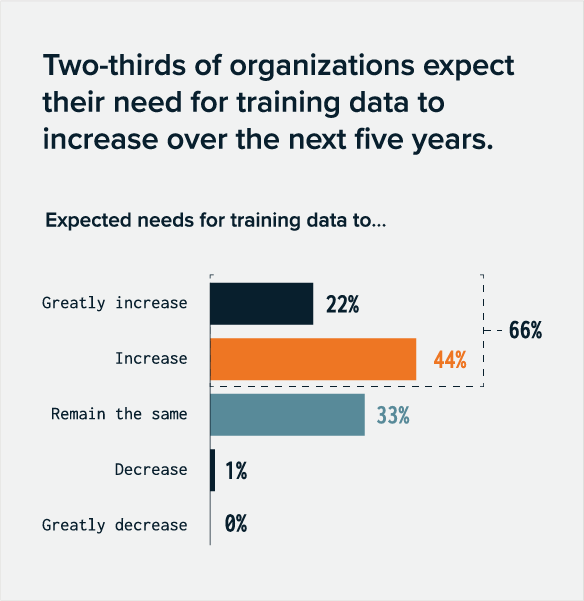Earlier this year, we released The Path to AI Maturity, a report detailing the findings from our first annual study on the state of artificial intelligence (AI) maturity within US organizations today.
With the massive amounts of investment in AI made by enterprises in recent years – and the acceleration of digital transformation across organizations to address shifts in user behavior – our goal was to understand the impact of these trends in terms of AI maturity, along with the drivers for AI and the success factors for these initiatives.
In the survey, we focused on US organizations with annual revenues of over $100M and company sizes greater than 500 employees. We also screened potential respondents for their relevant level of AI experience.
Our findings represent the views of 200 senior decision makers, two thirds of whom are from the C-Suite.
Initial report findings – 40% of US enterprises have reached the higher stages of AI maturity
Our initial report highlighted that 40% of US enterprises have reached the higher stages of maturity with their AI initiatives, which means they have moved from the theoretical and experimentation phases to seeing tangible results and return on investment for AI.
The results also showed that organizations that have reached the highest stages of maturity – Systemic and Transformational on Gartner’s AI maturity model – state that quality training data is the most important contributor to the success of their AI strategies.
As a result, two-thirds of respondents expect budgets for training data will increase.

Insights from our new report – Specifics on the ROI of training data
The new report, The ROI of Training Data, provides highlights from our initial report as context, as well as additional findings from the research. These include how organizations measure the impact of quality training data, and how this changes as their AI programs mature.
To better understand how organizations view their growing AI training data investment, we asked respondents to indicate ROI across four key factors, with the ability to select more than one or suggest others. Here were the findings, in order of importance:
- Operational efficiency (65%) – Investing in high-quality training data creates more efficient, productive, and powerful AI systems that can accomplish more in a shorter amount of time.
- Cost reduction for our Al program (64%) – Going hand-in-hand with operational efficiency is cost reduction. When organizations invest in high-quality training data from the start, they are able to avoid rework and costly delays.
- Reduced error rates (59%) – Using quality training data to train machine learning algorithms leads to more accurate models and lower overall error rates.
- Improved reputation (55%) – Businesses that invest in high-quality training data see greater accuracy in their AI models which leads to better customer experiences and a stronger brand.
The keys to sourcing high-quality training data
Our research also revealed that 99% of businesses partner with external organizations to supply their AI data training data. The new report provides more detail on the criteria used to evaluate training data vendors and how this differs by maturity stage. These include:
- Trust – Enterprises want to confidently train their AI models, and need a data partner who will deliver accurate and reliable data, on time and on budget.
- Reach – Enterprises also want to expand globally to capture more market share and this requires
a partner that can provide them access to new markets.
- Longer strategic partnerships – Where the vendor is not just a supplier of training data, but a key collaborator in the development of AI systems.
- Speed – Our results showed that mature organizations particularly value execution speed, as they may be deploying AI across an entire business process or across the entire company.
At the highest level, our research shows that quality training data is key to reaching AI maturity. To review the full findings in our latest report, download The ROI of Training Data now.





Speak Your Mind